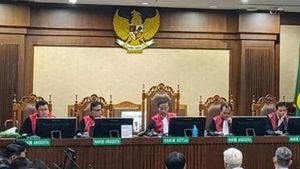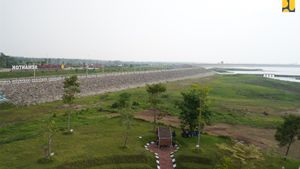JAKARTA - Nepal is publishing a new map covering a small stretch of disputed land. The publication of the new map reinforces his stance in a decades-long dispute over the region with India rejecting the map reform.
The Prime Minister (PM) of Nepal KP Sharma Oli is under intense pressure from student groups and lawmakers to issue new maps since India opened an 80 km long road. The road opened by India connects the northern state of Uttarakhand with Lipulekh on the border with Tibet which is a controversial area.
"Nepal will initiate dialogue with India simultaneously to resolve border issues through diplomatic channels," said Nepal's Law Minister Shiva Maya Tumbahangphe.
Nepal claims the territory under an 1816 agreement with the East India Company which defines Kali as its western boundary with India and says the land to the east of the river is its territory. Nepalese officials say the exact size of the area is still being calculated.
The new map shows a plot of land, including areas such as Limpiyadhura, Lipulekh and Kalapani, jutting out from the far northwest of Nepal. The new map was announced by Minister of Land Management Padma Aryal who said the opportunity was "historically pleasant" for Nepal and its people.
India and Nepal both show Kalapani and Lipulekh on their political maps, but Nepal previously did not show Limpiyadhura. The area is considered important because it is the border of Nepal and India which is close to China. Adding to the disputed land currently occupied by India, Nepal's total area has increased from 147,181 square kilometers to 147,516 square kilometers, according to Nepalese authorities.
"It was a matter of contention when Nepal first drew its maps in the 1970s, but it was decided that the Limpiyadhura region would be withdrawn after discussions with India," said border expert Buddhi Narayan Shrestha.
But India, which says the land is its territory, rejects Nepal's "unilateral action" saying it is not based on historical facts and evidence.
"It goes against the bilateral understanding to resolve extraordinary border issues through diplomatic dialogue. Such enlargement of artificial territorial claims will not be accepted by India," Indian Foreign Ministry spokesman Anurag Srivastava said in a statement.
India has maintained security posts in the area since its border war with China in 1962.
Nepalese officials said the new maps would be printed in school, college and official documents textbooks and would be used for all administrative purposes.
The English, Chinese, Japanese, Arabic, and French versions are automatically generated by the AI. So there may still be inaccuracies in translating, please always see Indonesian as our main language. (system supported by DigitalSiber.id)













